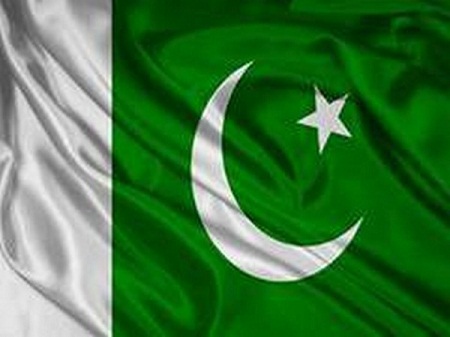Great power rivalries in the 20th century led to two deadly world wars, followed by a bitter cold war
between the US and USSR. Since the latter’s fall in 1991, wars have occurred but without any global
contestation for power. Now we have one again, pitting the US and its western allies against Russia
in Europe and China in Asia.
Cold War II is not only different from the first one in its underlying reasons but also more dangerous
in its plausible implications.
Cold War I was born from the ashes of the second world war when the US decided to contain the
expansion of Soviet communism in Europe and the world. It averted another world war through
nuclear deterrence and ended when the USSR ultimately collapsed, enabling the US to emerge as the
sole superpower. China at the time was too poor, and Russia was too weak.
Why then, just three decades later, the US and its western allies face another cold war with these two
powers in two different continents. Why did the US fail to use its unipolar moment to sustain global
leadership well into the next century?
The answer lies in the American hegemonic drive to impose a liberal international order upon a
world with diverse political systems and economic structures. In the process, the US has fought
wasteful wars, in Afghanistan and the Middle East, with devastating consequences. Its imperial
impulse to enforce a neo-liberal economic model and export liberal democracy has ultimately created
two formidable enemies out of China and Russia.
To be precise, the roots of Cold War II lie in the US inability to compete with China economically
and its attempt to encircle Russia through NATO enlargement.
China’s economic rise has deeply worried Washington since 2013, when President Xi Jinping
launched the Belt and Road Initiative. This trillion-dollar energy and infrastructure development
project aims to keep China’s economic growth steady by investing and relocating its surplus capital
and production capacity to BRI nations. China has additionally integrated itself in the global
economy by leading or joining organizations like the SCO in Central-South Asia and the RCEP in
Asia-Pacific. Consequently, the US perceives China as a key threat to its ability to dictate the terms
of international trade.
Moreover, since the 2007-08 global financial crisis, the US economy has grown sluggishly, raising
its trade deficit with China significantly. That is why the US launched a trade and technology war
against China in 2018, and decided last year to shift the US strategic focus from the Middle East to
the Indo-Pacific.
China can ill afford to engage in a futile security competition with the US, let alone fight a war, as
this will slow down its economy and progress of BRI. A key reason behind its economic success
since the 1980s is that while the US and Europe have fought major wars, China has waged none.
Despite the fact that China is currently nowhere near the US in military power or naval bases, it is
economically rich and demographically strong enough to confront the US during Cold War II. Given
its stable rise so far, this power will only grow in future.
What should concern us is the possibility that Cold War II might be more prone to turn hot because
of geography: For there is no clear line in the vast Asian continent like the Iron Curtain, which
prevented a major war in Europe during Cold War I due to mutual fear of nuclear annihilation.
Limited conflicts will occur over China’s territorial claims or the maritime routes that run between
China and the Persian Gulf, deliberately or accidentally. And they could also turn into protracted
conventional wars, with the potential to turn nuclear.
Cold War II in Europe is even riskier, as it begins with a hot war. There is a particular backdrop to
the Russian attack against Ukraine. Moscow chose not to confront NATO when it included ten
former Warsaw Pact countries in central and eastern Europe into its fold during 1999-2005. Nor did
it resist the eastward expansion of the EU or the democracy promotion by the US. But NATO’s
decision to extend its membership to Georgia and Ukraine at the Bucharest summit in 2008 was the
last straw, and Russia under Vladimir Putin decided to draw the line. Within months, it invaded
Georgia, occupying its breakaway border regions.
In 2014, when the pro-Russian Ukrainian president was ousted from power in a US-sponsored
‘orange revolution,’ Russia reacted by occupying Ukraine’s Crimea peninsula. The issue of NATO
enlargement had almost frozen subsequently, until last year when the US and UK began arming
Ukraine and took other provocative steps in the Baltic Sea. So, when Russia moved its military along
Ukraine’s border, the war was a foregone conclusion.
Russia would like Ukraine to act as a buffer state, not become a de facto NATO state to threaten its
security. It has set a bad precedent by attacking and violating the sovereignty of an independent
nation. But it is also a fact that the US and its NATO allies did not leave Russia with any other
choice.
How the Ukraine war finally unfolds remains to be seen. But the hostility it has created between
Russia, the US and its European allies is likely to persist. Consider also that the 1987 intermediate
nuclear forces treaty is no more, and the nature of risks this war entails for European security
becomes amply clear. By placing its nuclear arms on high alert during the war, Russia has already
raised the alarm bell.
Finally, the US and its western allies will have to wage Cold War II simultaneously in Europe and
Asia against two formidable enemies, the militarily powerful Russia and economically powerful
China, which will also have respective allies. Especially in Asia, how much support the US is able to
muster from its two QUAD allies, the reluctant India and the anti-war Japan, will determine how far
it prevails over China.

















